Up Next

Mercedes has revealed knowledge built during previous wet races, including its disastrous 2019 German Grand Prix, was key to its confidence the heavily-worn intermediates on Lewis Hamilton’s car would comfortably last to the end of the Turkish Grand Prix.
Hamilton won the race by over half-a minute despite qualifying only sixth as Mercedes struggled to get the tyres working in qualifying – when it took around seven laps to get the Pirellis into the ideal temperature window on the low-grip circuit.
But despite images of intermediates that were largely worn down to slicks, save for the tread on the outer edges, and runner-up Sergio Perez suggesting his intermediates would have failed given another lap, Mercedes was not concerned.
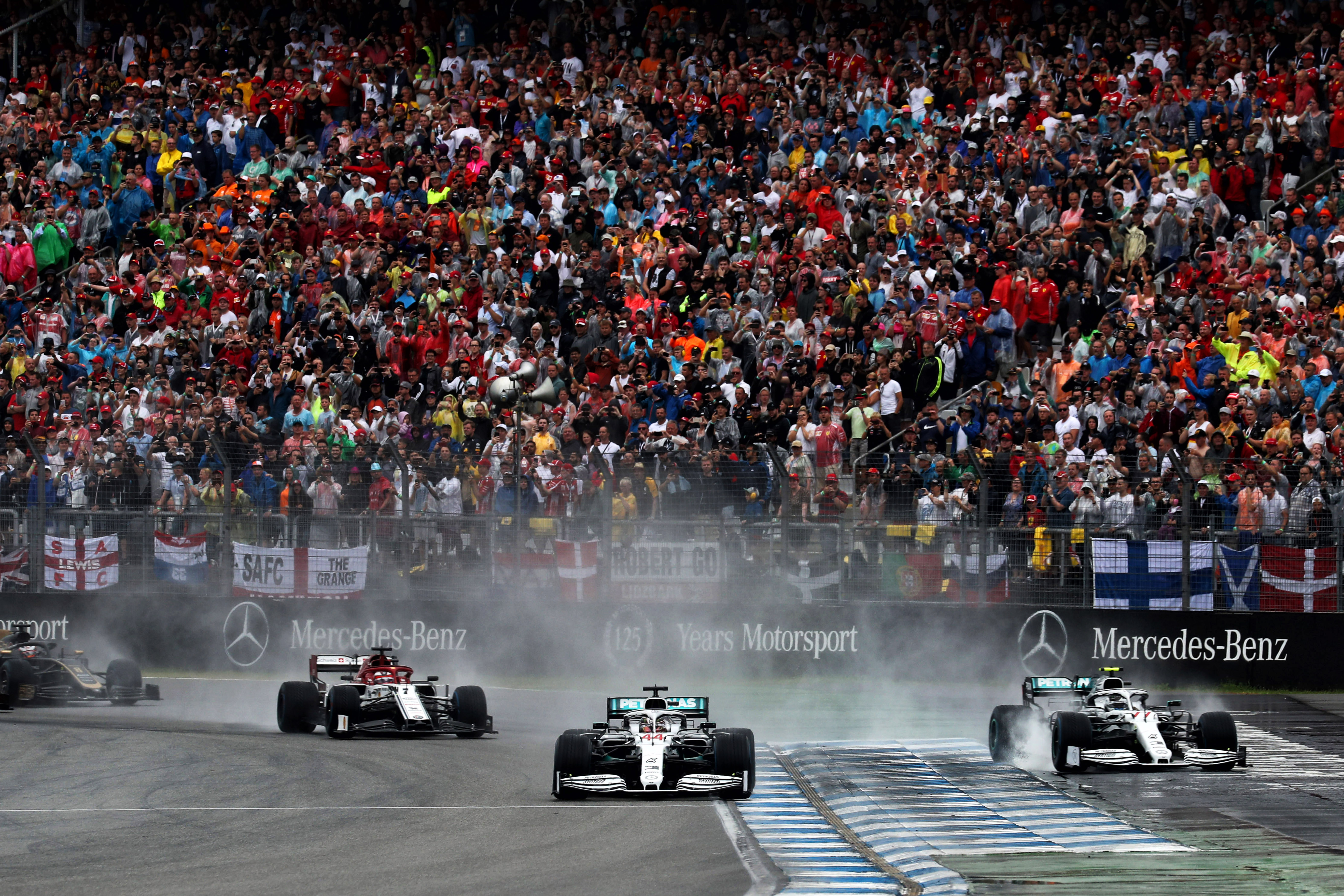
Given the intermediate and wet tyres used this year are similar to those used in Germany in 2019 (pictured above), where Hamilton finished ninth after sliding into the wall under the safety car then losing further time to a chaotic pitstop and Valtteri Bottas crashed, that past experience made a significant contribution to the team’s understanding of the tyres at Istanbul Park.
“On dry tyres, we have a huge amount of experience from previous circuits and we are able to put that together and understand how it should perform at a new circuit,” said Mercedes chief strategist James Vowles in a race debrief video released by the team.
“We don’t have that same luxury on the intermediate tyre or the wet tyre. We have the odd lap here and there from circuits where perhaps it’s been a little bit damp, but what we need is sustained running in wet conditions in order to truly understand those tyres.
“The difference though is the intermediate and wet tyre haven’t changed dramatically in the last few years.
“So, we are able to use data from a few years ago, including Hockenheim 2019 for example, and use that to understand what we believe the tyre should be doing here. Clearly there is a lot more interpolation from that data.
“We have a ballpark idea of where the pressure should be, what the temperatures should be, but that’s not enough to truly understand how that tyre will perform.
“So, if you actually talk about what happens on the intermediate tyre, it may help to understand a little bit more.
“As the track dries and as you run an intermediate tyre, it starts to tear off the rubber that is on the surface. It starts with groves that are there to clear water, but clearly in this case it is just a damp track, there was no water left not sufficient you need to clear that away anymore.
“You run it down to a slick and that slick is actually like a very low temperature soft tyre, if you will it is a grippy soft rubber compound that just works. Therefore, it is not a bad thing to run the intermediates down.”
While Hamilton and Perez ran to the end having changed to intermediates in the first 10 laps, the rest of the leading drivers opted for a second stop.
Ferrari driver Charles Leclerc was the first to do this, stopping on lap 30 and setting what was then the fastest lap of the race on lap 32, improving on that by three tenths of a second on the following lap.
On that lap, he was 3.4s faster than Hamilton, although the Mercedes driver then upped his pace and when Leclerc improved his fastest lap next time round, Hamilton was 1.6s slower.
But this performance disparity was not sustainable as those who did find a big performance gain after switching to intermediates didn’t continue to make gains.
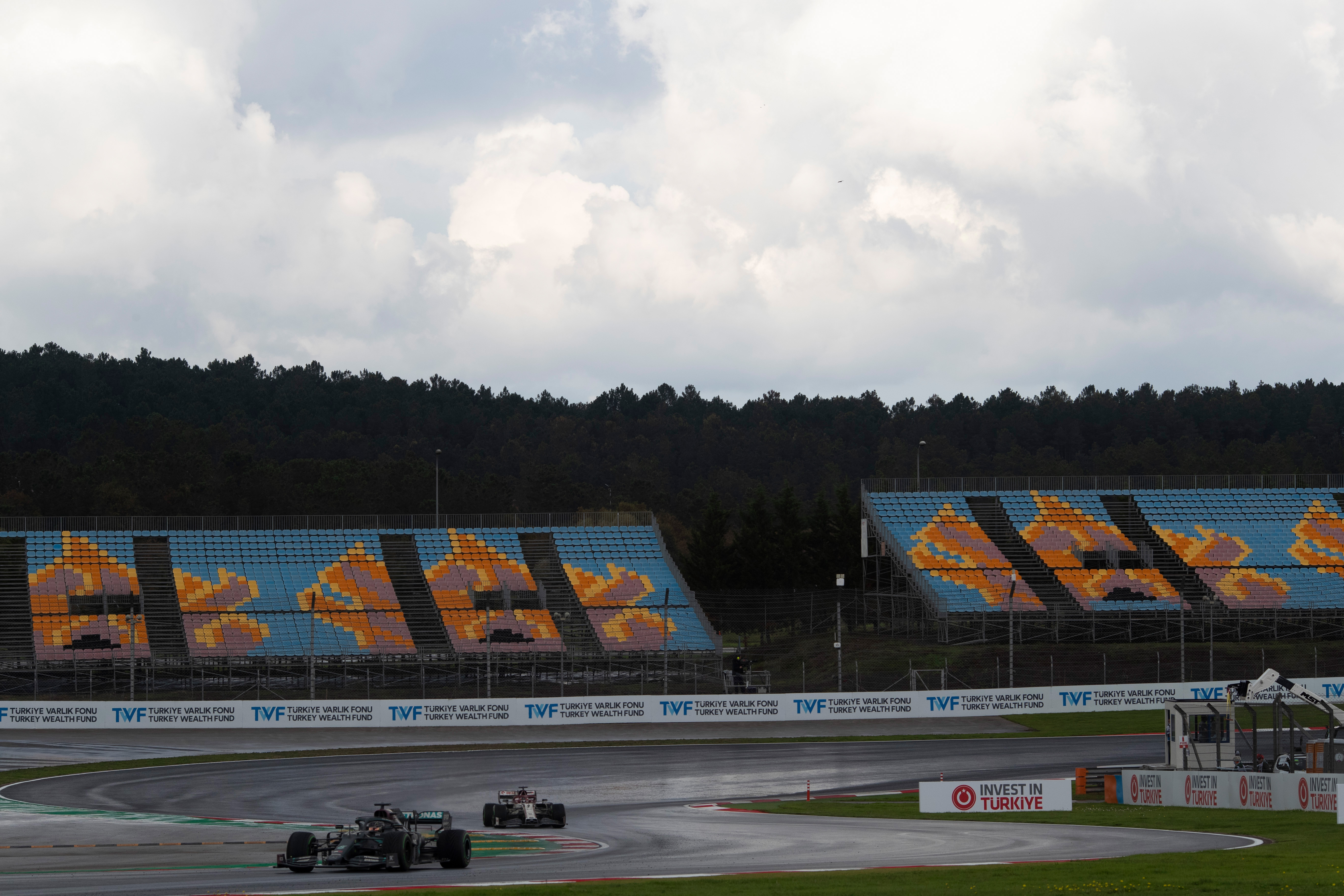
Hamilton was still able to set his fastest lap of the race on lap 56 of 58 on his way to a dominant victory.
“When you stop and you fit fresh intermediates they come out of the blankets warm and they’ll perform well for a few laps, but how well they perform across the reminder of the run is really subject to how they wear in those conditions and that can be tricky at times – which is what you saw with a few of our competitors, but not all,” said Vowles.
“It was clear that running them down to slick was the key. We didn’t have any further rain forecast on the radar and actually that tyre would perform very well.
“In terms of reliability and where we were going, obviously in the wet the energy is much, much lower. Clearly Turkey is a difficult track, but the speed you are going at in these damp conditions you are not generating anything near the loads we would do on dry tyres.
“We were comfortable that we would be able to continue but should we start to see issues or troubles or drop off from the tyre, we would have reacted immediately and come in with Lewis.”
Vowles added that the late call for Hamilton, which the driver rejected, to pit for fresh intermediates was not driven by concerns about the physical wear of the tyres.
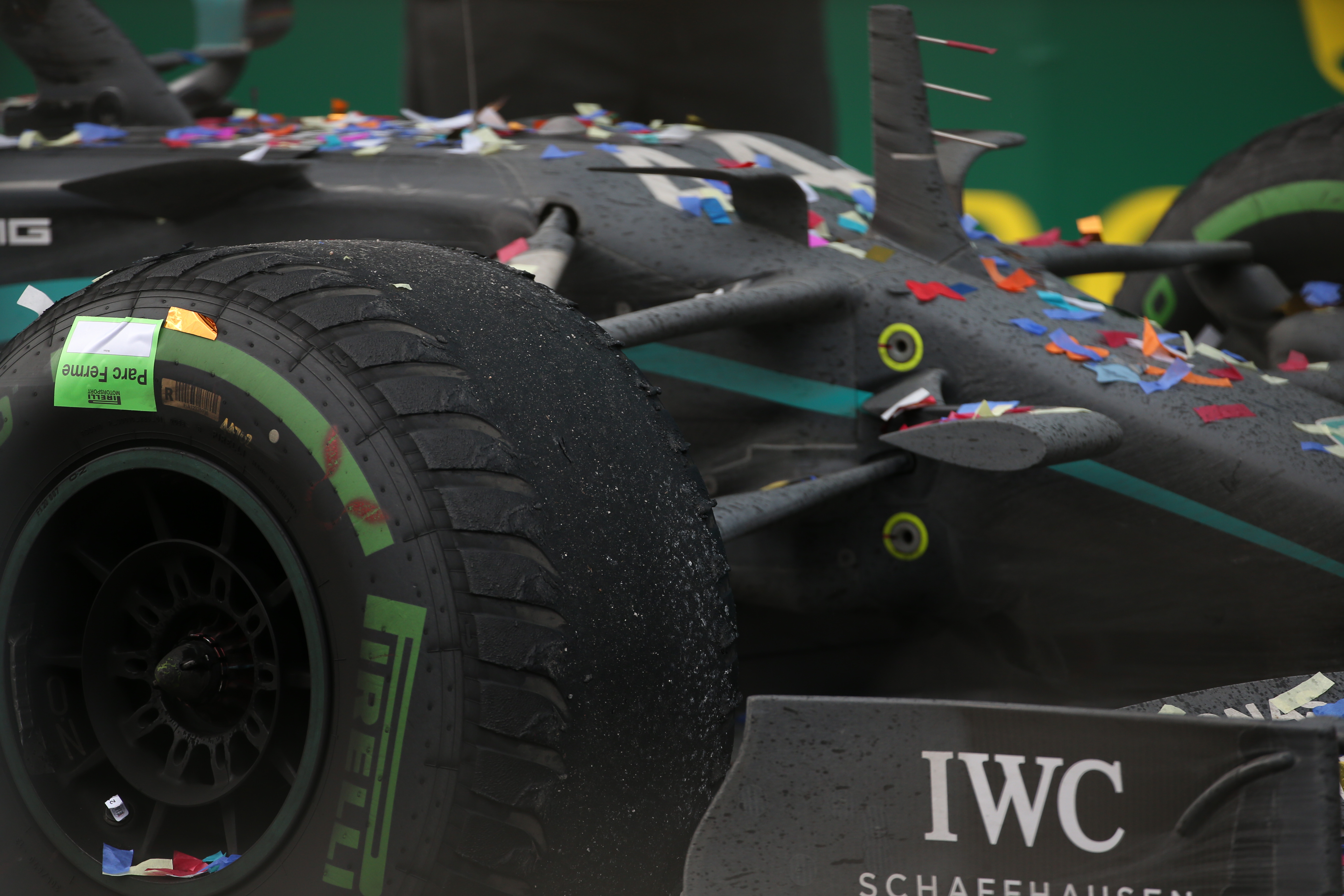
Instead, it was a precautionary measure given the threat of rain, as while the intermediates were performing well on a drying track the lack of tread would have been problematic if the rain returned.
“The largest concern we had was actually heavy rain or certainly rain forecast across the last few laps of the race,” said Vowles. “We could then, if you imagine we are just on slicks now, be in real trouble if the rain started to fall.
“Let’s take the worst case, condition Lewis is going through Turn 1, we have to do the entire lap in either light or heavy rain with tyres that are fundamentally slicks now and that could have been an issue.
“That’s one of the reasons why we called Lewis in to box across the last few laps. We weren’t concerned about the tyres making it to the end, we were just concerned about some rain that was appearing on the horizon. Fortunately, the rain didn’t appear.”
Vowles also explained why Mercedes struggled in qualifying thanks to the length of time it took to build tyre temperature.
Hamilton qualified sixth with Valtteri Bottas in ninth, the first time there hasn’t at least been one Mercedes in the top five on the grid since the 2013 Italian Grand Prix.
Mercedes was at its strongest in the first part of qualifying, where Hamilton and Bottas could complete relatively long runs on wets, but the problems grew as qualifying progressed.
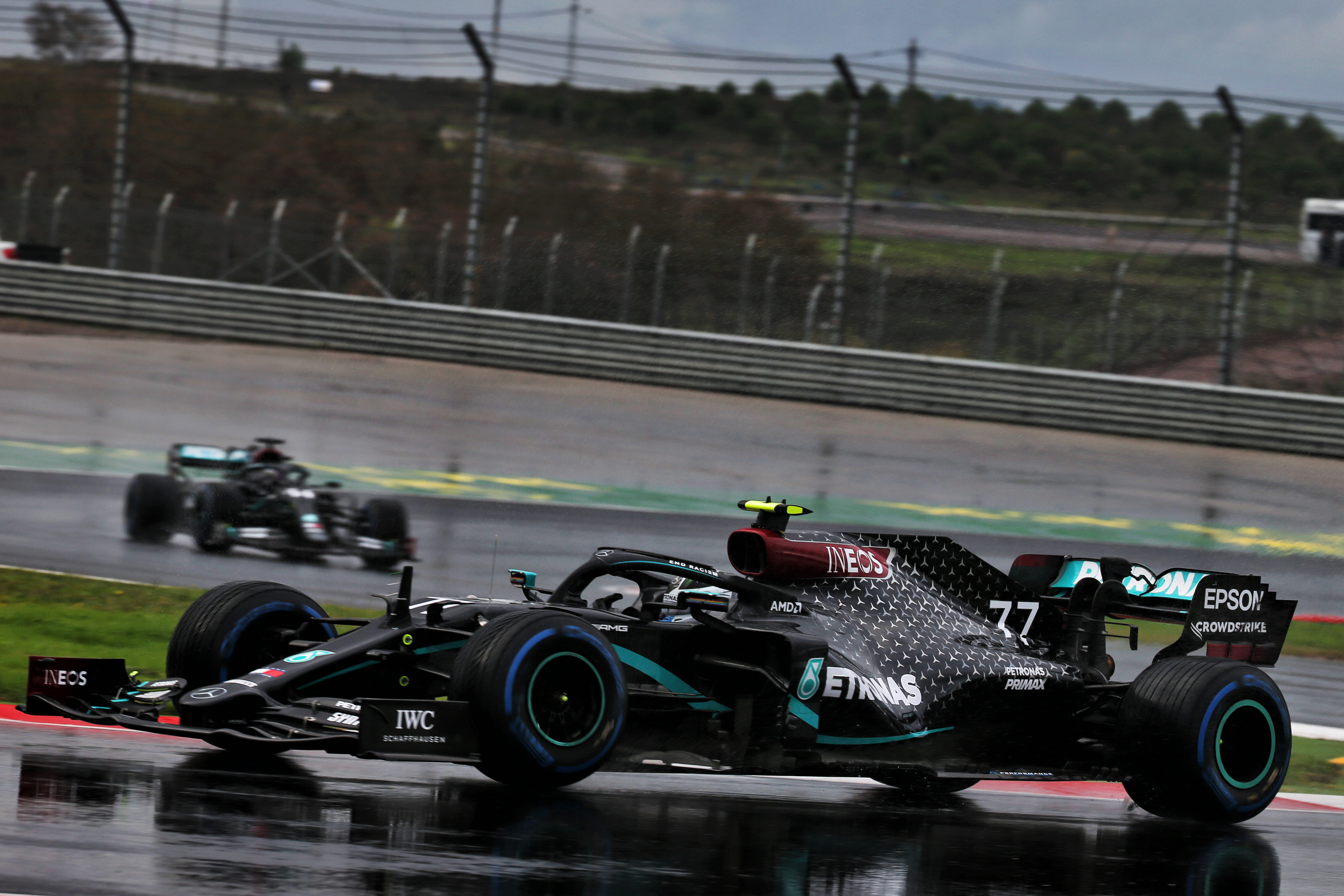
Vowles explained this was down to the characteristics of the car, which are usually beneficial thanks to being relatively gentle on the tyres, but that efforts will be made to find a way to improve performance if such conditions are repeated.
“In Q1 when cars were on the wet tyre doing multiple laps and we weren’t poor relative to the field at that point,” said Vowles. “But at the end of Q1, after multiple red flags, we saw the true extent of the problem.
“All drivers had just one timed out on wets to make it work. [Max] Verstappen’s time was incredibly quick relative to our own. We just can’t generate the energy and temperature in the tyres on one lap.
“Whenever you see these big discrepancies between drivers and teams, not tenths but seconds, it’s not traditionally car performance that’s dominating this anymore. It’s about tyre temperature and getting the tyres into the correct window.
“In Q2 it was a long run on wets for everyone and again, we were offset by Verstappen by two seconds. Not the differences we were seeing at the end of Q1 but even so a large, large performance offset.
“And in Q3, [Lance] Stroll did exactly the same run plan we did, with one timed lap on wets followed by two timed laps on intermediate tyres after it was proven to be faster. And yet there was five seconds difference between the two teams.
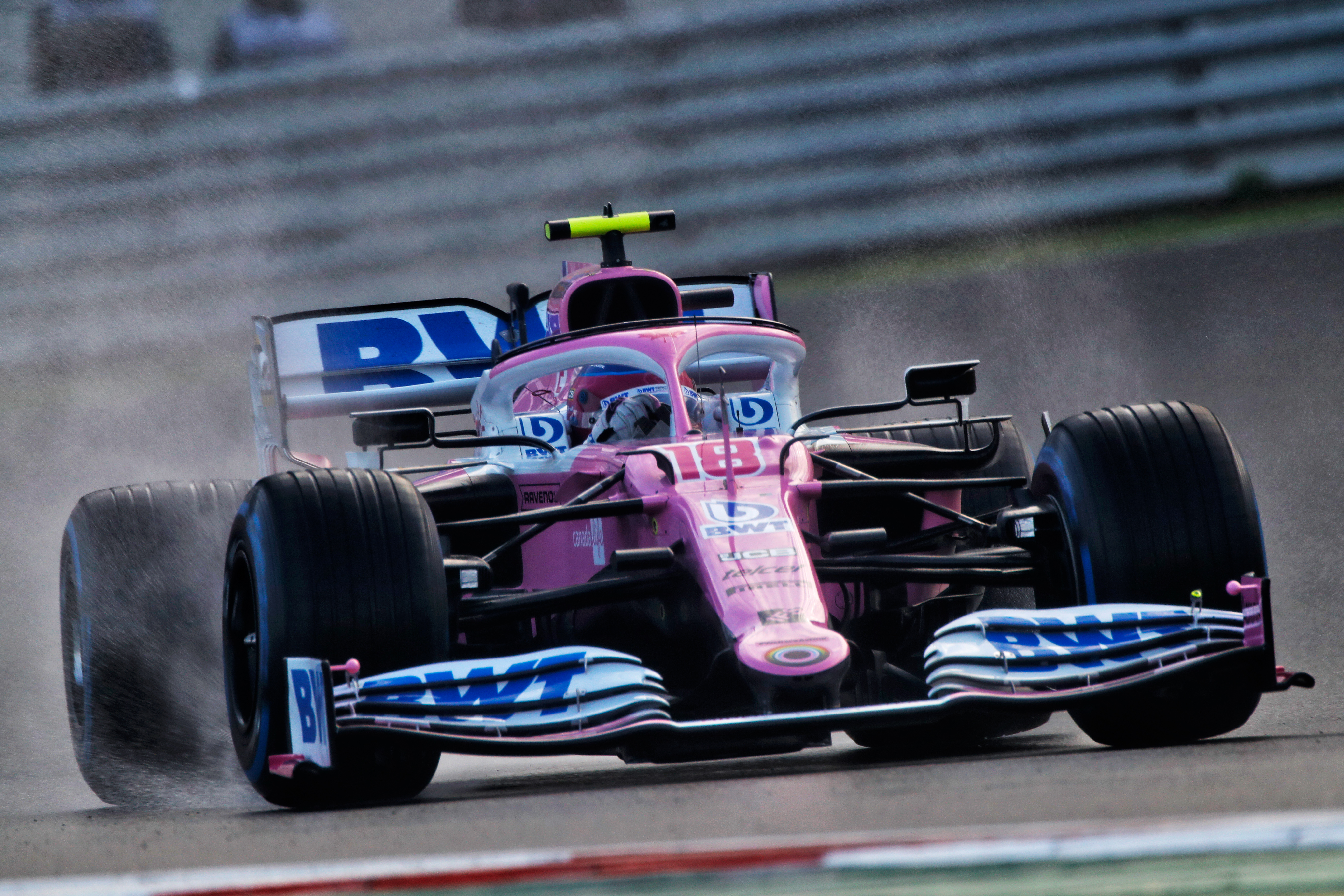
“So if you dig into why, it is all about the energy that you are putting into a tyre, which the engine will produce energy as you turn and rotate the rear tyres and generate slip, the brakes will generate energy, both front and rear, and again that will go into the tyre.
“But obviously the ground is wet, and the rain is taking away energy from the tyres continuously, so it is all about putting more energy in than is being taken away by the conditions.
“The faster you are in certain parts of the track, the more energy you generate and the more temperature you generate, but where we were with our car in those conditions was offset relative to the leaders. So much so we couldn’t generate the performance required.
“We don’t build a car for these conditions. We’re building a car that works on tracks in a normal range of temperatures that we are expecting, be it wet or dry, and clearly we ran out of tools and authority to be able to change what we needed to, in this occasion to generate the tyre temperature.
“We don’t have all the answers, but we are reviewing exactly what we would do now with a new set of components or set-up changes should this circumstance appear again.”









